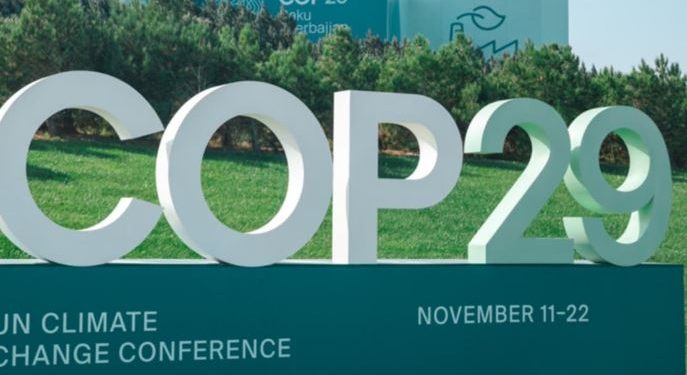Baku (Azerbaijan): In the closing hours of the UN climate conference here, developed countries on Friday proposed increasing climate finance for developing nations from USD 100 billion to USD 250 billion per year by 2035 — a figure far short of the trillions needed to address the escalating climate crisis.
A new draft text on a climate finance package for developing nations emerged on Friday afternoon, presenting concrete numbers from developed countries for the first time, hours after countries were left facing an ‘X’ sitting in a bracket instead of a clear figure after two weeks of intense negotiations.
While developing countries demand that developed countries provide them with USD 1.3 trillion per year starting in 2025, the text calls on everyone to “work together” to raise this amount annually by 2035, including all public and private sources.
It does not place the responsibility solely on developed countries.
More than 190 countries are negotiating climate finance obligations by rich nations for developing countries as part of the implementation of the Paris Agreement of 2015. The pact binds collective action to cut down on emission of greenhouse gases to restrict the temperature rise to below 1.5 degrees Celsius compared to pre-industrial times.
The text says USD 250 billion per year by 2035 will be raised by developed countries from a wide variety of sources, public and private, bilateral and multilateral, including alternative sources.
It invites developing countries to make additional contributions, including through South-South cooperation, to the goal but doesn’t mention any specific amounts for least developed countries and small island states or for loss and damage.
Climate policy experts and observers said it’s bad text for developing countries and they will react strongly to it.
R R Rashmi, a distinguished fellow at The Energy and Resources Institute (TERI), called it a “highly compromised” version of the goal.
“The language is very similar to the language of the COP decision on the USD 100 billion goal and makes it clear that future development flows will be linked to climate conditionalities,” he said.
Avinash Persaud, Special Advisor on Climate Change to the President of the Inter-American Development Bank, said the USD 250 billion commitment to be led by developed countries is short given adaptation needs alone.
“Reliance on the hope and prayer of cross-border private sector flows that have so far been negligible will be a point of contention,” he said.
Vaibhav Chaturvedi, senior fellow at Delhi-based think tank Council for Energy, Environment and Water (CEEW), said USD 250 billion per year by 2035 is the same as USD 100 billion by 2020 if 6 per cent annual average inflation is accounted for.
“There is no grant or low-cost finance component. This is a bad deal for the developing world, irrespective of how it is going to be portrayed by the presidency. The USD 1.3 trillion number is a sham,” he said.
Countries were required to reach an agreement on the new climate finance package for the developing world at the UN climate conference in Baku.
Developing nations have repeatedly said they need at least USD 1.3 trillion annually — 13 times the USD 100 billion pledged in 2009 — starting from 2025 to meet their escalating climate challenges.
Linda Kalcher, the executive director of European think tank Strategic Perspectives, said: “The USD 250 billion reads like a provocation for as long as all sources of finance count towards it.”
Li Shuo, the director of China Climate Hub at the Asia Society Policy Institute, expected countries to react strongly to the USD 250 billion figure. “It’s important to hear what they say now.”
PTI






































